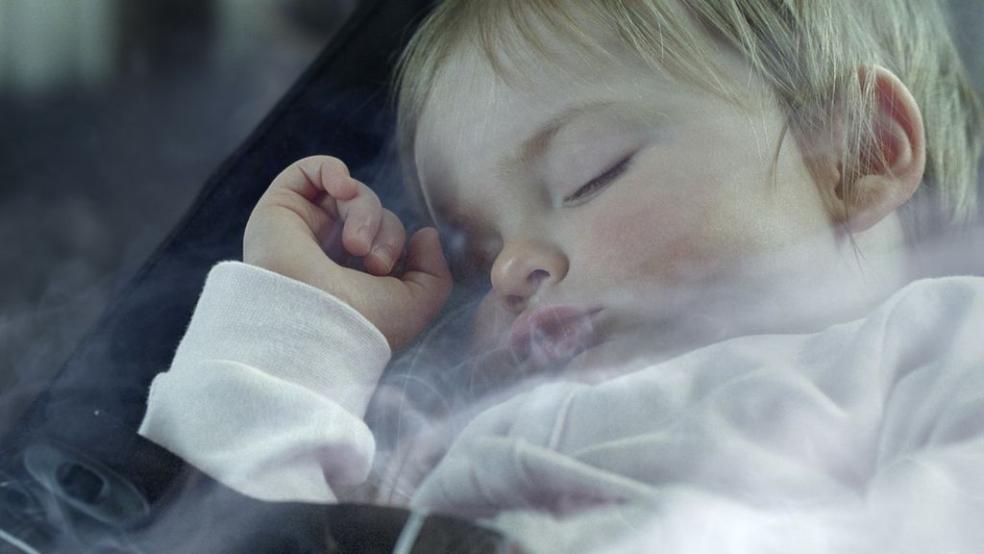
New campaign highlights the true dangers of secondhand smoke
Over 800 children visit their doctor every day due to the serious effects of secondhand smoke exposure, according to research published by the Royal College of Physicians*. The figures have been highlighted today as the government launches a campaign to increase awareness of the hidden dangers of smoking in homes and cars.
More than 80% of secondhand smoke is invisible and odourless, and contains harmful cancer-causing toxins and poisons. TV adverts will show that smoking out of a car window or the backdoor is not enough to protect children from secondhand smoke.
Every day millions of children in the UK are exposed to secondhand smoke, which puts them at increased risk of lung disease, meningitis and cot death. Treatment, hospital and GP visits for secondhand smoke related illnesses cost the NHS more than £23.6 million each year.
The only way to completely protect people from secondhand smoke is to make homes and cars entirely smokefree. As the campaign launches, a new survey** highlights that despite the risks, many children are still exposed to secondhand smoke:
- 68% of parents who smoke admit to doing so in the car with their children present
- 75% of smoking parents were shocked to hear that secondhand smoke affects the health of so many children
Chief Medical Officer Professor Dame Sally Davies said:
"It’s well known that smoking kills, but many smokers still don’t realise the damage their smoke causes to those around them. Secondhand smoke can be an invisible killer and with more than 300,000 people seeing their GP each year because of it, we need to make sure people know how dangerous it can be.
"Our message is clear: giving up smoking is by far the best way to protect your family and we can help you quit to give you and your loved ones a healthier future."
Professor Kevin Fenton, Director of Health and Wellbeing at Public Health England said:
"We hope these figures showing the number of children who need hospital treatment for the effects of secondhand smoke and the information contained in the campaign will provide a wake-up call to many smokers out there.
"We must do more to protect the health of our children and making your home and car smokefree will reduce this unnecessary harm to children’s health."
Dr Harpal Kumar, CEO of Cancer Research UK said:
"The evidence is clear. Smoking around children is harmful, especially in homes and cars, so it’s vital they are protected from the dangers of secondhand smoke. Raising awareness of the dangers, providing information and supporting parents to make healthy choices are the first steps towards this.
"We hope this campaign helps bring attention to this and encourages parents and all adults to protect their families and make their homes and cars smokefree."
The campaign will launch today (Tuesday 4 June) and will include TV and online advertising. It follows the success of other recent campaigns including Stoptober and a campaign showing the deadly mutations that smoking can cause.
Smokers can visit nhs.uk/smokefree to order a free Smokefree Kit. Facts, tips and tools are also available on the site to help them on the way to a smokefree future.
* Passive smoking and children. Royal College of Physicians, London, 2010
** Survey conducted by Onepoll in May 2013 of 679 smoking parents from across England
The contents of secondhand smoke and their uses in everyday life (information from Cancer Research UK) include cancer-causing chemicals:
- Tar - a mixture of dangerous chemicals
- Arsenic - used in wood preservatives
- Benzene - an industrial solvent, refined from crude oil
- Cadmium - used in batteries
- Formaldehyde - used in mortuaries and paint manufacturing
- Polonium-210 - a highly radioactive element
- Chromium - used to manufacture dye, paints and alloys
- 1,3-Butadiene - used in rubber manufacturing
- Polycyclic aromatic hydrocarbons - a group of dangerous DNA-damaging chemicals
- Nitrosamines - another group of DNA-damaging chemicals
- Acrolein - formerly used as a chemical weapon
Other poisons in cigarette smoke:
- Hydrogen cyanide - used as an industrial pesticide
- Carbon monoxide - found in car exhausts and used in chemicals manufacturing
- Nitrogen oxides - a major component of smog
- Ammonia - used to make fertilisers and explosives




















